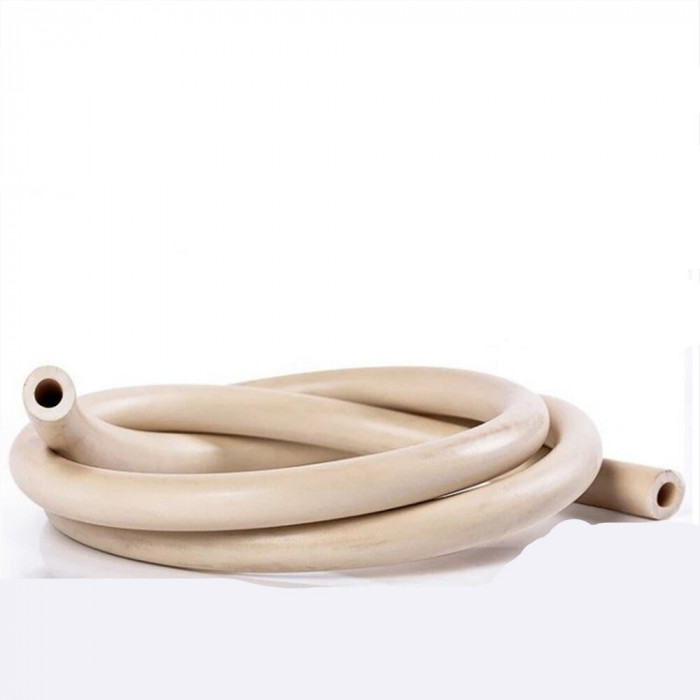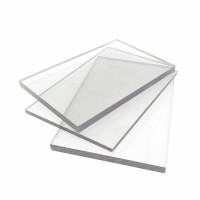Tube Vacuum 15х10 mm rubber TU 38.105881-85 are designed for connection and sealing of units of vacuum systems at air rarefaction up to 133.3x10-12 MPa. Vacuum rubber has a high material elasticity and gas tightness.
Operating temperature: -8°C to +70°C (short-term up to -30°C)
The color of the vacuum tube is white, grayish.
Vacuum tubes are used in many areas of industry, instrument making, food production, as a sealant and connector for vacuum systems. They are characterized by high elasticity and a wide range of thick-walled tube options. This handset is highly sensitive to changing conditions of use. Therefore, they can be applied at low temperatures for a short amount of time.
A vacuum tube is a device used to control the flow of electrical current using a vacuum in a sealed container, which usually takes the form of a glass tube, hence the name. The vacuum tube is the forerunner of the modern transistor and was used in the same way as electronic switches, rectifiers, amplifiers, oscillators, and in other creative ways that transistors can use today. The cathode ray tube (CRT) was widely used in early televisions and computer monitors, since the screens are a kind of vacuum tube.
At its core, a vacuum tube is a heat exchanger consisting of two tubes placed one inside the other. The outer tube is made of durable glass, the inner tube is made of copper. To enhance the absorption of solar energy, a heat-absorbing layer, an adsorber made of a multilayer coating, is placed in the interior of the glass bulb. Also, air is evacuated from the interior of the glass bulb, thereby creating a vacuum that has the best performance, in comparison with air, in terms of thermal conductivity and the ability to retain heat. The resulting thermal energy is transferred to a copper heat pipe, inside which a refrigerant is placed, which rises when heated, where it evaporates in the condenser. The heat generated during the evaporation of the refrigerant is transferred to the heat carrier of the heating or hot water supply system. Properties Common properties, regardless of design, for all types of vacuum tubes, is the presence of a light-absorbing layer, an adsorber, placed in a glass tube made of durable glass. Depending on the design, the properties inherent in a particular type of tubes also differ. Vacuum tubes are: Simple - used in water heating installations with an open circulation circuit. In this design, the coolant circulates directly in the "body" of the glass tube. A simple U-shaped tube is an improved version of a simple design. A U-shaped copper channel and a heat-absorbing plate are placed in the body of the glass bulb. This design can be used in networks with excess pressure and allows you to repair the collector (replacement of the tube), without stopping the operation of the system in which it operates. U-shaped tube With a heat rod "HEAT PIPE" - differs from the U-shaped design in that a copper rod is placed in the interior of the glass bulb, inside which, in turn, a lightly boiling liquid, a refrigerant, is pumped. Properties and usability are similar to U-shaped structures. With a heat rod With an increased absorption area ("SUPER HEAT PIPE") - is a one-piece design, with an increased thermal plate. The possibility of use and properties are similar to the properties of the above structures. With increased absorption area Materials Regardless of the design of the vacuum tube, the main material used in all types of devices is borosilicate glass, which can withstand significant external loads without damaging the glass bulb body (rain, snow, hail, etc.). Another material used in almost all designs is copper, from which the inner tube is made. Copper was not chosen by chance, because it is this metal that has good thermal conductivity and practically does not corrode during operation. Antifreeze (refrigerant), a substance placed in the interior of a copper tube, has the ability to evaporate at a relatively low temperature. The adsorber is a heat-absorbing layer that can be made of various compositions capable of absorbing heat. The type of composition, each manufacturer chooses individually. The heat-absorbing plate is made of copper and attached to the heat rod.
Types of vacuum hoses
Vacuum hoses have a number of advantages when compared to conventional hoses. It may seem to some that all these advantages are not so effective, and to some extent this is true. But in the design of the vacuum hoses themselves, technology was originally built in, thanks to which they can withstand much larger drops.phenomena. Since the drops negatively affect the condition of the hoses themselves, which very quickly become unusable.
At the moment, there are a huge number of categories of vacuum hoses, each of which is designed for specific purposes. Now we will look at some of the most important categories of vacuum hoses and find out what is the difference between them.
Rubber Vacuum Hose - This is one of the most common types of vacuum hoses. Many experts say that this type of vacuum hose is the most compact and useful in terms of use. This category of hoses is particularly flexible. At the same time, it is as strong as possible, which is why there are practically no problems with such hoses.
Silicone Vacuum Hose - As for this category, these are the most common vacuum hoses that do not differ in any characteristic features. Such hoses are as simple as possible to manufacture, respectively, and the price of such hoses is several times lower than more functional options.
Reinforced Vacuum Hose - This is one of the more expensive vacuum hose options. A characteristic feature of this type of hose is that inside it is located a thin reinforced spring, which actually provides additional structural rigidity. Most often, such hoses are used in industries, since in terms of functionality they show themselves best of all.
Flexible vacuum hose - This is a broader concept, and similar hoses can be found in both the silicone category of vacuum hoses and rubber. Such hoses are rarely used in production and most often perform purely domestic activities.
All these types of hoses are special in their own way, and they have completely different purposes. But we can say without a doubt that all of them are really of high quality and, if desired, they can be used in almost all spheres of life.
Application of vacuum hoses
As for the use of vacuum hoses, in this regard, there is simply a huge number of industries where vacuum hoses have found their application a long time ago. Most often, vacuum hoses are used in everyday life, and such information will not be surprising to anyone.
But it should not be denied that such equipment is also common in various industries, where none of the important processes in product development proceed without it. Most often, vacuum hoses are used in such an industry as mechanical engineering, and by the way, they show themselves more than well there.
But besides this, there is still a huge number of industries where vacuum hoses have long been indispensable, and perhaps in the near future the number of such industries will only increase.
Vacuum tubes are used in various fields, but it depends on the material from which specific vacuum products are made:
Rubber vacuum tubes are the most inexpensive products in the group. They are most often used for sealing and connecting various vacuum systems that operate at a discharge of up to 1.3x10-10 MPa;
Silicone vacuum tubes are used most often in the food industry. Due to the special properties of silicone, these tubes are used to transport products and liquids. Vacuum silicone tubing is not normally used in pressurized systems;
Glass tubes vacuum represent the most modern and perspective type of vacuum tubes. They are used in special solar collectors, which are used to heat water or other coolant in any weather during daylight hours.
The last type of vacuum tubes belongs to promising solar technologies. Thanks to glass vacuum tubes, it is possible to obtain thermal energy without burning fuel. During the day, one glass vacuum tube measuring 58x1,800 mm is capable of generating 0.1 kW of energy. If the weather is not sunny, the energy produced is three times less. The glass tubes have a thermos design, thanks to which the heat is retained even at night.
Vacuum hoses, both reinforced and not, can be bought in Moscow. Our company has vast experience in sales and service of various vacuum equipment. By contacting us, you will receive comprehensive advice on the acquisition and maintenance of vacuum equipment.
Vacuum devices are one of the effective types of solar heating collectors. Principle of operation
vacuum-type collectors, their device and other issues on the topic are discussed in the article brought to your attention.
How does a vacuum type collector work?
Modern vacuum devices that provide rooms with heat and hot water due to solar energy differ technologically.
Collectors are divided into the following types:
tubular without glass protective coating;
module with reduced conversion;
standard flat version;
device with transparent thermal insulation;
air unit;
flat invacuum collector.
if factory parts. Therefore, it is most reasonable to purchase products from a specialized manufacturer, and then try to assemble several sections at home.
The vacuum tube is the main structural element of solar collectors, using which it becomes possible to obtain cheap thermal energy, which is used by man for his needs.
Structurally, the vacuum tube looks like this:
At its core, a vacuum tube is a heat exchanger consisting of two tubes placed one inside the other. The outer tube is made of durable glass, the inner tube is made of copper. To enhance the absorption of solar energy, a heat-absorbing layer, an adsorber made of a multilayer coating, is placed in the interior of the glass bulb. Also, air is evacuated from the interior of the glass bulb, thereby creating a vacuum that has the best performance, in comparison with air, in terms of thermal conductivity and the ability to retain heat.
The resulting thermal energy is transferred to a copper heat pipe, inside which a refrigerant is placed, which rises when heated, where it evaporates in the condenser. The heat generated during the evaporation of the refrigerant is transferred to the heat carrier of the heating or hot water supply system.
materials
Regardless of the design of the vacuum tube, the main material used in all types of devices is borosilicate glass, which can withstand significant external loads without damaging the glass bulb body (rain, snow, hail, etc.).
Another material used in almost all designs is copper, from which the inner tube is made. Copper was not chosen by chance, because it is this metal that has good thermal conductivity and practically does not corrode during operation.
Antifreeze (refrigerant), a substance placed in the interior of a copper tube, has the ability to evaporate at a relatively low temperature.
The adsorber is a heat-absorbing layer that can be made of various compositions capable of absorbing heat. The type of composition, each manufacturer chooses individually.
The heat-absorbing plate is made of copper and attached to the heat rod.
You can buy Vacuum Tube 15х10 mm from us at the best price in Ukraine. A wide range of products allows us to quickly and efficiently fulfill any order, helping to complete any construction work on time.
No questions about this product, be the first and ask your question.




